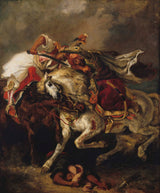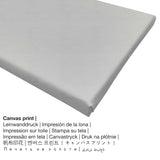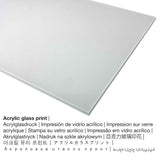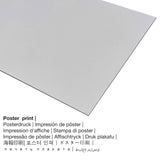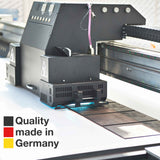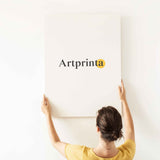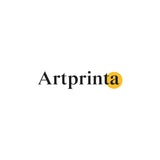Eugène Delacroix, 1835 - The Combat of the Giaour and the Pasha - kunsttryk
Inkl. Moms Forsendelse beregnes ved kassen.
Produktudbuddet
Dette mere end 180 år gamle mesterværk blev malet af mand maler Eugène Delacroix. The original has the following size: Height: 73 cm, Width: 61 cm. Oil painting was used by the French artist as the medium of the artwork. The original masterpiece has the following text as inscrption: Date and signature - Signed and dated lower right: "Eug 1835 Delacroix.". I dag hører kunstværket til den digitale kunstsamling af Petit Palais - Musée des Beaux-arts de la Ville de Paris, som er et kunstmuseum i 8. arrondissement. Det moderne kunst kunstværk, som er en del af offentlige domæne er inkluderet med høflighed af Petit Palais Paris.Kreditlinjen for kunstværket er følgende: . Oven i købet er justering portræt med et billedforhold på 1: 1.2, hvilket antyder det længden er 20 % kortere end bredden. The painter Eugène Delacroix was an artist, whose art style can be classified as Romanticism. The European artist was born in the year 1798 i Saint-Maurice, Val-de-Marne og døde i en alder af 65 i året 1863 i Paris.
Hvad ville være dit yndlingsmateriale til kunsttryk?
Til hvert kunsttryk tilbyder vi forskellige materialer og størrelser. Vælg mellem følgende produktmuligheder nu for at matche dine præferencer i størrelse og materiale:
- Tryk på akrylglas: The acrylic glass print, often described as a fine art print on plexiglass, makes the original into lovely décor. Further, the acrylic art print makes a good alternative option to canvas or aluminium dibond art prints. Your favorite work of art will be manufactured with the help of modern UV printing technology. The major upside of an acrylic glass art print is that contrasts plus smaller image details will be recognizeable due to the precise tonal gradation.
- Aluminium dibond print: An Aluminium Dibond print is a material with a true depth. The bright & white parts of the work of art shimmer with a silk gloss, however without glow. Colors are luminous in the highest definition, fine details are crisp, and there’s a matte appearance that you can literally feel.
- Plakat print (lærredsmateriale): Our poster print is a UV printed canvas paper with a fine surface finish. Please bear in mind, that depending on the absolute size of the canvas poster print we add a white margin 2-6cm around the print, which facilitates the framing.
- Lærred print: The printed canvas material mounted on a wood stretcher frame. Hanging a canvas print: A canvas print has the great advantage of being relatively low in weight, which implies that it is easy and straightforward to hang up the Canvas print without additional wall-mounts. A canvas print is suited for all types of walls.
Legal note: We do our best in order to describe our products as exact as we can and to display them visually in our shop. Still, the pigments of the printing material and the imprint can diverge somehwat from the representation on the device's screen. Depending on your settings of your screen and the nature of the surface, colors may not be printed as exactly as the digital version on this website. In view of the fact that all art reproductions are printed and processed manually, there might as well be minor differences in the exact position and the size of the motif.
Oplysninger om strukturerede varer
| Artikelklassificering: | kunsttryk |
| Reproduktion: | digital gengivelse |
| Produktionsteknik: | UV direkte print (digital print) |
| Proveniens: | tysk produktion |
| Lager type: | produktion efter behov |
| Tilsigtet produktanvendelse: | boligdesign, væggalleri |
| Orientering: | portrætjustering |
| Billedforhold: | 1: 1.2 |
| Fortolkning af billedforhold: | længden er 20 % kortere end bredden |
| Tilgængelige produktstoffer: | metaltryk (aluminium dibond), akrylglastryk (med ægte glasbelægning), plakattryk (lærredspapir), lærredstryk |
| Kanvastryk (lærred på båreramme) størrelsesmuligheder: | 50x60cm - 20x24", 100x120cm - 39x47", 150x180cm - 59x71" |
| Akrylglasprint (med ægte glasbelægning) størrelsesvarianter: | 50x60cm - 20x24", 100x120cm - 39x47", 150x180cm - 59x71" |
| Muligheder for plakattryk (lærredspapir): | 50x60 cm - 20x24", 100x120 cm - 39x47" |
| Aluminium print (aluminium dibond materiale): | 50x60 cm - 20x24", 100x120 cm - 39x47" |
| Billedramme: | Uden ramme |
Strukturerede kunstdetaljer
| Kunstværkets titel: | "The Combat of the Giaour and the Pasha" |
| Klassificering af kunstværker: | maleri |
| Generelt udtryk: | moderne kunst |
| Periode: | 19th århundrede |
| Oprettelsesår: | 1835 |
| Kunstværkets alder: | over 180 år gammel |
| Artwork originalt medium: | Oliemaleri |
| Original størrelse (kunstværk): | Højde: 73 cm, Bredde: 61 cm |
| Signatur på kunstværket: | Date and signature - Signed and dated lower right: "Eug 1835 Delacroix." |
| Museum/sted: | Petit Palais - Musée des Beaux-arts de la Ville de Paris |
| Museets sted: | Paris, Frankrig |
| Museets hjemmeside: | Petit Palais - Musée des Beaux-arts de la Ville de Paris |
| Licens til kunstværket: | offentlige domæne |
| Venligst udlånt af: | Petit Palais Paris |
Kunstneroplysninger
| Kunstnerens navn: | Eugène Delacroix |
| Køn: | mand |
| Kunstnerens nationalitet: | Fransk |
| erhverv: | maler |
| Kunstnerens land: | Fransk vin |
| Klassifikation: | moderne kunstner |
| Kunststile: | Romantikken |
| Alder ved død: | 65 år |
| Fødselsår: | 1798 |
| Hjemby: | Saint-Maurice, Val-de-Marne |
| død: | 1863 |
| Død i (sted): | Paris |
Denne tekst er intellektuel ejendomsret og beskyttet af copyright ©, Artprinta.com
Original artwork information from Petit Palais - Musée des Beaux-arts de la Ville de Paris website (© Copyright - Petit Palais - Musée des Beaux-arts de la Ville de Paris - Petit Palais - Musée des Beaux-arts de la Ville de Paris)
Inspired by oriental Lord Byron poem, the painting represents the decisive battle between the Giaour, mounted on a black horse, and Hassan Pasha, on his white horse. The Giaour, standing over his saddle, hard with a wild smile cloth covering the chest of the Pasha to reach the heart with acute blade of his sword. The pasha, precariously balanced on his horse, holding in his right hand a dagger, trying to push her attacker on the other hand. The ferocity of the struggle is also expressed in the attitude of the horse, the black horse biting the chest white horse, already wounded in the thigh. The latter seems to be reluctant to walk on the dead body of a Muslim lying on the ground. For Delacroix, the subject is mostly an excuse to portray a melee of great intensity, where humans and animals are closely associated.
Figure guardian of Romanticism, Delacroix was introduced to the East by reading Byron works. He discovers the realities during a trip to Morocco in 1832. His style of painting is deeply marked by the experience. This painting was inspired by a passage from Byron oriental tales published in 1814 under the title "The Giaour, a fragment of a turkish tale". The story chronicles the thwarted loves of a Venetian, the Giaour (term for an infidel to Muslims) and a slave, Leila, belonging to the harem of Hassan, military chief of a Turkish province. Leila, who missed the loyalty she had the Pasha Hassan was thrown into the sea. Her lover, the Giaour, the revenge by killing Hassan.
Hassan Pasha (literary character); The Giaour (literary character)
Scene, Single combat, Knight, Pasha, Turkish, Turban, Horse, Saber, Dead, Orientalism

